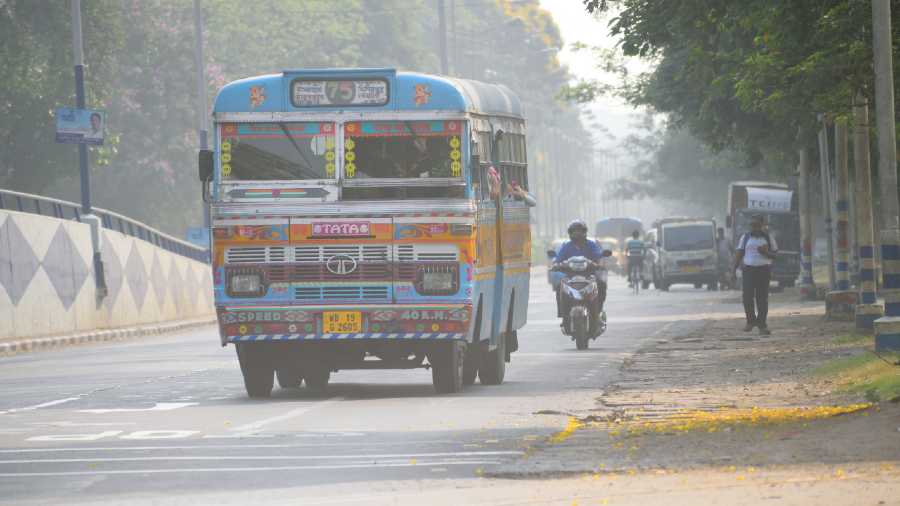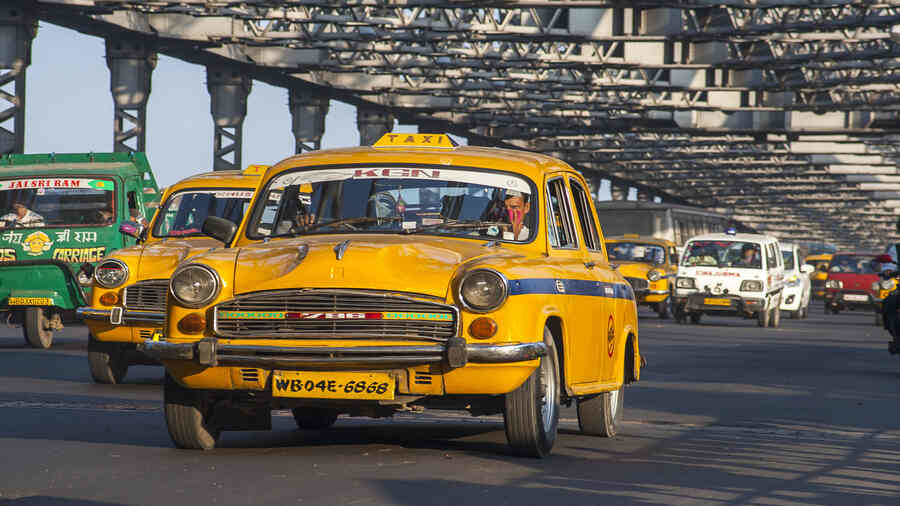Quoting the state pollution control board, West Bengal’s environment minister, Manas Bhuiya, on Wednesday said Kolkata’s PM2.5 level in 2019 was lower than what was cited in a recent international study.
The study had ranked Kolkata as the second most polluted among populous cities.
According to the international study, Air Quality and Health in Cities: A State of Global Air Report, published recently by the US-based Health Effects Institute (HEI), only Delhi had a higher annual PM2.5 level than Kolkata in 2019 (110 micrograms) among the 103 most populous cities covered by the study.
“After the global report was released, I asked the state board chairman to submit a report. After a detailed analysis, they found that the actual PM2.5 value in 2019 was 57 micrograms and not 84 micrograms,” Bhuiya said.
However, the minister said, “There is no room for complacency as the state’s PM2.5 limit stood at 57 and not 84. The Pollution Control Board’s job is to alert people and issue advisories. A lot of discussions have taken place, let’s implement the same on Ground Zero now.”
Earlier, PCB officials, about three weeks after the city was given the second most polluted tag, had dug out four PM2.5 figures of 2019 to counter the population-weighted figure showcased by HEI which had put the city’s PM2.5 count at 84 micrograms.
“We had found that the population-weighted figure for Kolkata in 2019 was 57.7 micrograms, while the IIT Delhi model-based study pegged the figure at 62 micrograms and the satellite-based figure from IIT Delhi was 68 micrograms. If we take the average of all these measurements made in Kolkata, the figure stood at 55 micrograms,” said Kalyan Rudra, PCB chairman, at an earlier meeting.
According to professor Sagnik De of IIT Delhi, who is also involved with PCB projects, the population-weighted exposure value for Kolkata was about 57 in 2019 and claimed that the HEI data was “an overestimate”. He reasoned that HEI value was higher than actual because satellites cannot record the data properly during the rainy season when the pollution count is less.
However, De admitted that the logic applied to all cities, especially to those where the number of rainfall days are more in comparison.
What HEI said
A senior scientist associated with the HEI study said that they stood by their findings, reached through a combination of satellite and ground-level data as well as chemical transportation analysis; and the methodology was the same for the 7200-plus cities covered under the study.
The state board only uses ground-level data provided by its automatic and semi-automatic monitoring stations located across the city.
De also claimed that a large portion of the city's air pollution comes from other states, quoting studies from 2015 as well as recent trends and observed that “West Bengal is at the receiving end of the pollution outflow through the Indo-Gangetic Plain”.
He said, “Air quality management requires inter-state coordination and a holistic approach and will take years to get positive results.”


